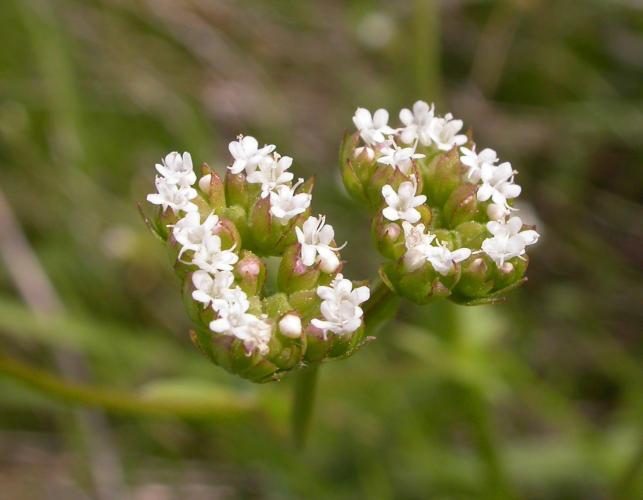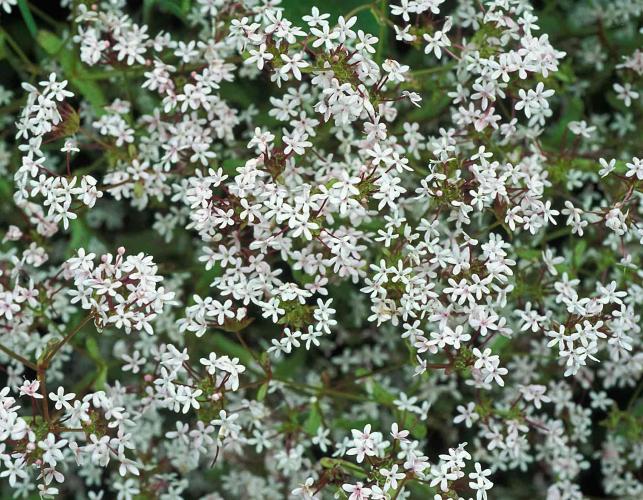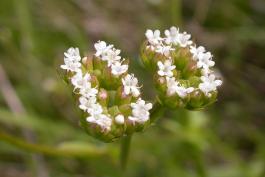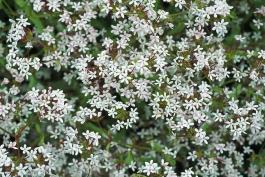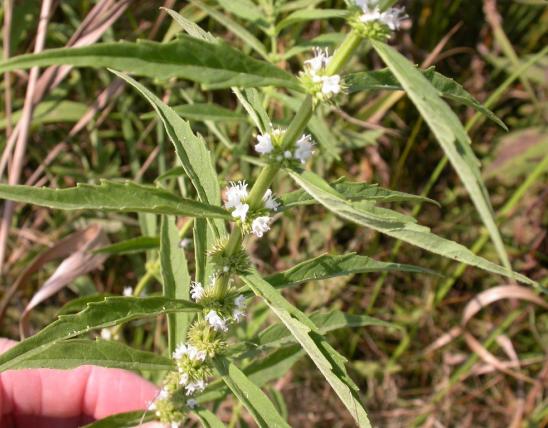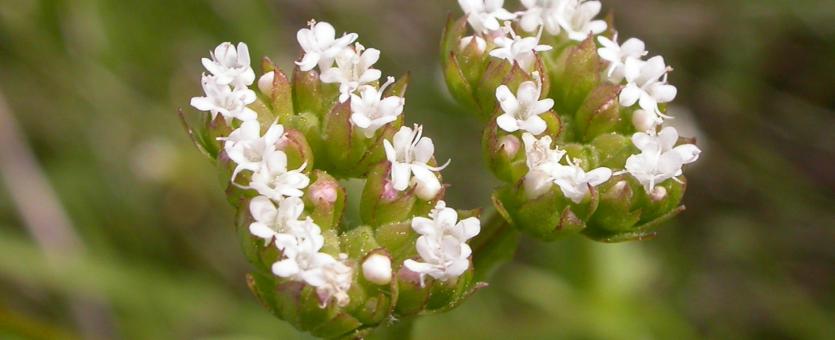
A low annual herb, much branched. Flowers minute, in umbel-shaped, close cymes, several of these close together, forming a platform. Each flower forms a funnel with 5 white lobes. Blooms April–May. Leaves opposite, sessile, clasping; the lower ones with a few teeth near their base, oblong with rounded tops.
Height: usually less than 1 foot.
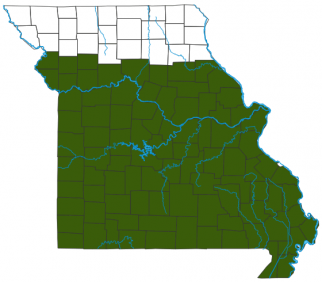
Statewide except northern portion.
Habitat and Conservation
Occurs in fallow fields, prairies, wet meadows, open soils in valleys, creek bottoms, rocky glades, rocky or open ground, waste places, roadsides, and railroads. Often forms large colonies.
Human Connections
This plant is named “corn salad” because it, like its cultivated cousin in Europe, can be used as a salad green. Missouri botanist Julian Steyermark noted that the young basal rosettes “make an excellent salad, especially when prepared with olive oil and vinegar.”
Ecosystem Connections
There are three species of corn salad (genus Valerianella) in our state. Two, including this one, are native. The other, also called "lamb's lettuce," was introduced from Europe as a salad green and potherb. It can be grown in a vegetable garden and sometimes escapes into the wild.
